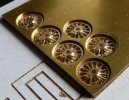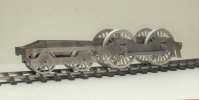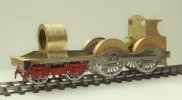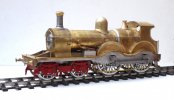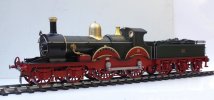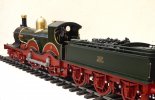There are several handsome 4-4-0 loco designs from the 19th century but for my money the GWR Armstrong Class engines are more elegant than the others.
I built one of these engines years ago in G1, I think one should be represented in G3. As I have the drawings for G1 it is easy to scale them up to G3.
I started with the wheels, they are machined from 8mm ali plate.
Mike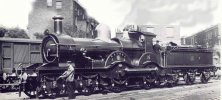
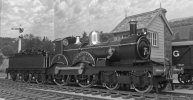

I built one of these engines years ago in G1, I think one should be represented in G3. As I have the drawings for G1 it is easy to scale them up to G3.
I started with the wheels, they are machined from 8mm ali plate.
Mike





